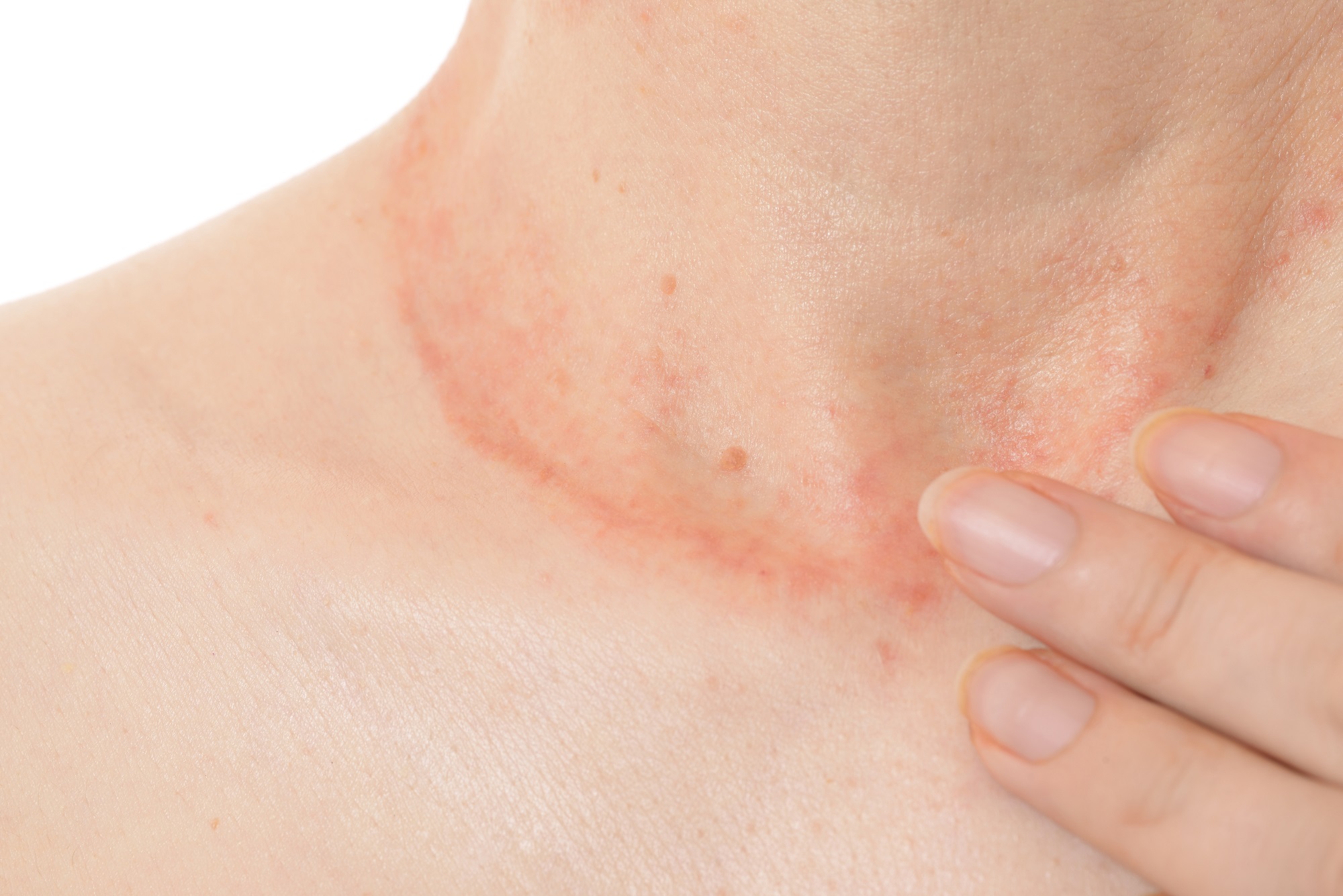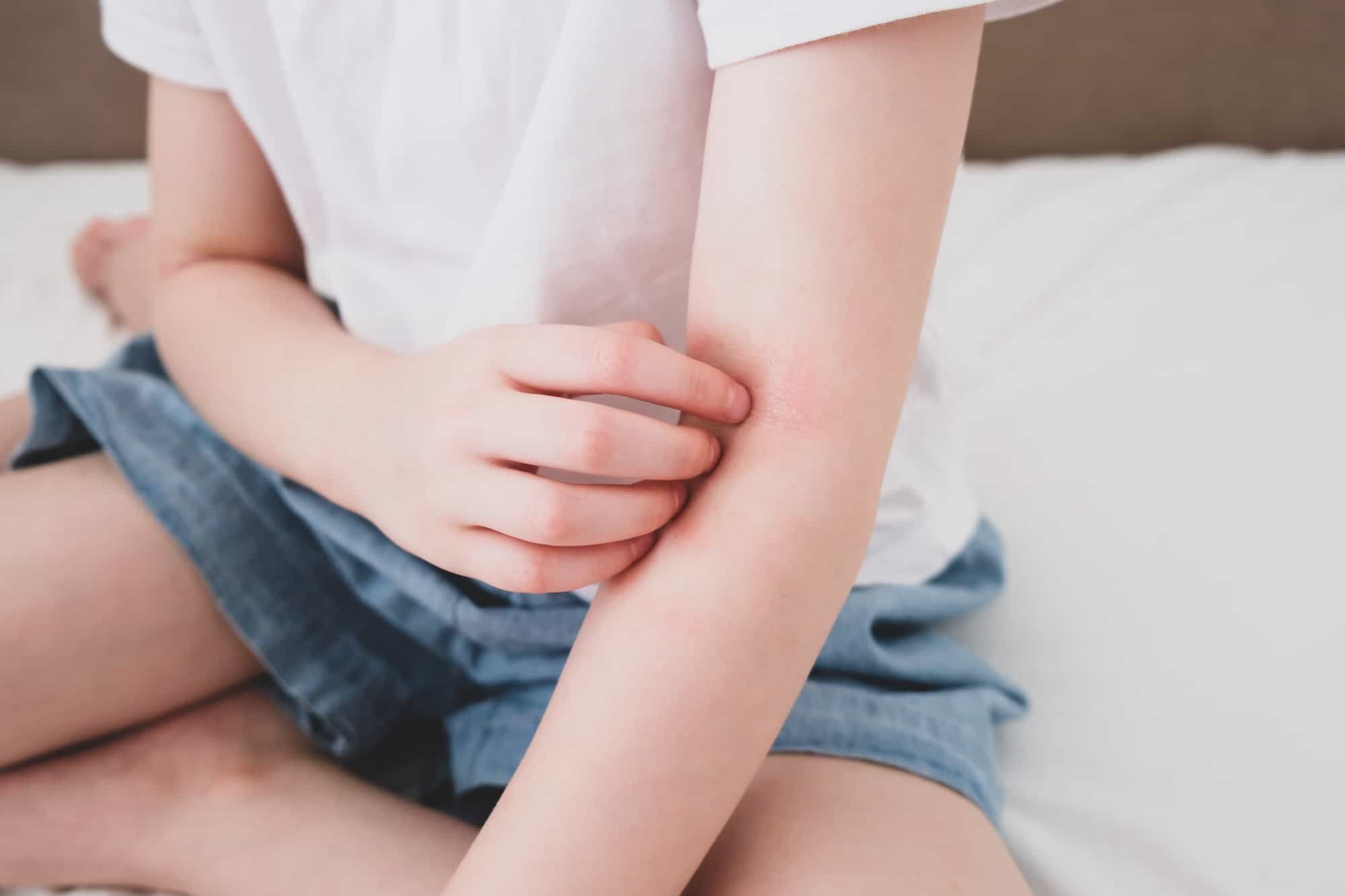The aetiopathogenesis of atopic dermatitis
The exact aetiopathogenesis of atopic dermatitis is not known, but certainly involves genetic and environmental factors.
Atopic dermatitis is often associated with elevated serum levels of total IgE, the immunoglobulins that are formed following an allergic and immunological reaction, and the presence of specific IgE directed towards aeroallergens or food allergens; however, there is no close correlation between IgE levels and disease severity.
Environmental factors, including allergens, stress, skin infections, sweating, in the presence of the genetic substrate, are capable of exacerbating a hypereactive skin inflammatory process.
In acute phases, the ectema that is created in atopic dermatitis is characterised by swelling, vesiculation and crust formation; in chronic phases it is characterised by fissuring and lichenification.
One could also have contact dermatitis, similar to atopic dermatitis but stimulated by contact with an irritant substance.
Symptoms of atopic dermatitis

A common feature of atopic dermatitis in children and adults is itching, which occurs in fits, triggered by various factors such as changes in temperature and humidity, mechanical stimulation or contact with allergens.
Atopic dermatitis in children often begins between the third and sixth month of life and manifests itself with erythematous patches, modestly oedematous, which may become covered with tiny vesicles, sometimes with serous exudate, giving rise to yellowish serum-hematous crusts called milky crusts.
The site of the lesions varies according to age:
- up to 2 years of age the most affected sites are the face, neck and scalp;
- around 4-10 years of age the lesions are localised mainly at the cubital or popliteal folds, hands and face;
- in adolescents, lesions are mainly localised at the level of the face, neck, limb folds and hands.
In adults, lesions also affect the genital and periareolar areas, which are not affected by atopic dermatitis in children.
Sometimes the lesions may be nummular, i.e. coin-shaped. Typical of atopic dermatitis is the manifestation at the level of the
hands (continuous need to wash hands because the skin is always dry) and onychodystrophy.
Typical of the palms of the hands and the lateral surface of the fingers is dyshidrosic eczema, characterised by horny microvesicles.
Minor clinical signs, i.e. those occurring less frequently in different patients, could be:
- Skin dryness with a tendency to desquamation
- Keratosis pilare (aggregation of keratinocytes at the hair follicle outlet, resembling goose bumps)
- Cheilitis angularis (the tendency to continuously lick the lip and the deposit of saliva lead to the onset of perioral lesions)
- Rashes of the subauricular fold
- Pityriasis alba (maculae or hypopigmented spots with shaded margins distributed in a non-specific manner most often on the face or limbs that become evident after tanning because there are areas where there is no homogeneous deposition of melanin and are typical features of atopics.
You may also like
What is atopic dermatitis and which treatments are most suitable
Atopic dermatitis, also known as endogenous eczema, is a benign disease with a multifactorial aetiology, which, together with asthma and allergic rhinitis, is one of the atopic diseases, i.e. diseases related to the tendency of certain (atopic) individuals to manifest amplified immune responses to small amounts of allergens. We distinguish two forms of atopic dermatitis… Continue reading What is atopic dermatitis and which treatments are most suitable
Symptoms of multiple sclerosis in women
Multiple sclerosis (MS) is an autoimmune disease that affects the central nervous system, causing a variety of symptoms in women of all ages. MS is a chronic disease that progressively evolves and can have negative consequences on the quality of life of affected women. One of the main symptoms of MS in women is fatigue.… Continue reading Symptoms of multiple sclerosis in women
Symptoms of multiple sclerosis in men
Multiple sclerosis (MS) is a chronic disease of the central nervous system that affects millions of people worldwide, including a significant number of men. MS is an autoimmune disease that affects myelin, a substance that surrounds and protects nerve cells in the brain and spinal cord. This impairs the brain’s ability to communicate with the… Continue reading Symptoms of multiple sclerosis in men
Erectile dysfunction: what it is and which remedies are most effective
What is erectile dysfunction? First of all, in defining erectile dysfunction, it must be made clear that we are not talking about a disease, but often it can be a symptom revealing the presence of a physical pathology, such as an alteration in the cardiovascular system, an endocrine-metabolic problem, a neurological disease or even diabetes.… Continue reading Erectile dysfunction: what it is and which remedies are most effective
Erectile dysfunction: what it is and what are its symptoms
Erectile dysfunction is a more common disorder than one might think, and it is easy to see how it can put men who suffer from it in check. However, it is not easy to understand what solution can help achieve significant improvements, also in light of the fact that the causes can be of a… Continue reading Erectile dysfunction: what it is and what are its symptoms
